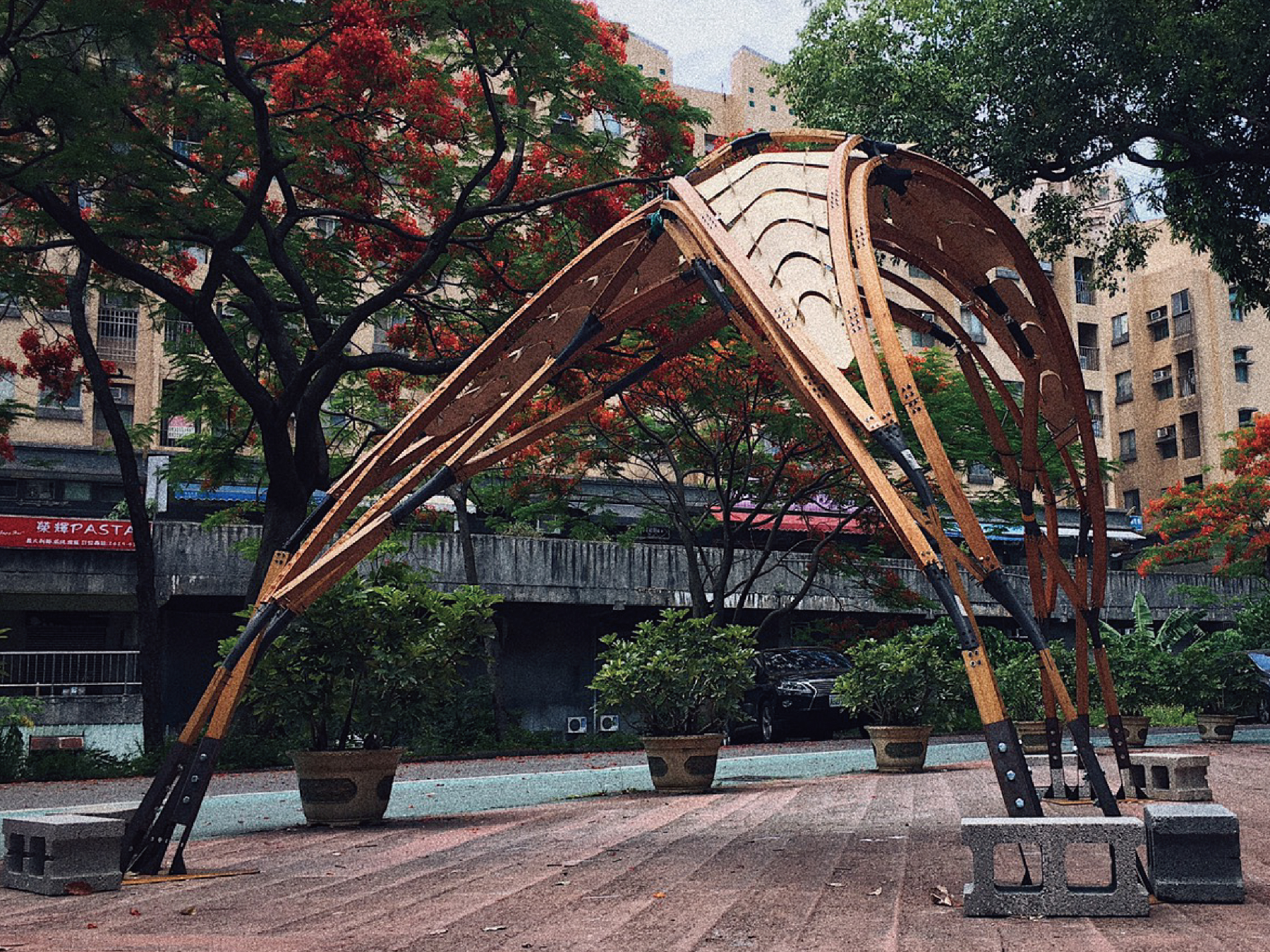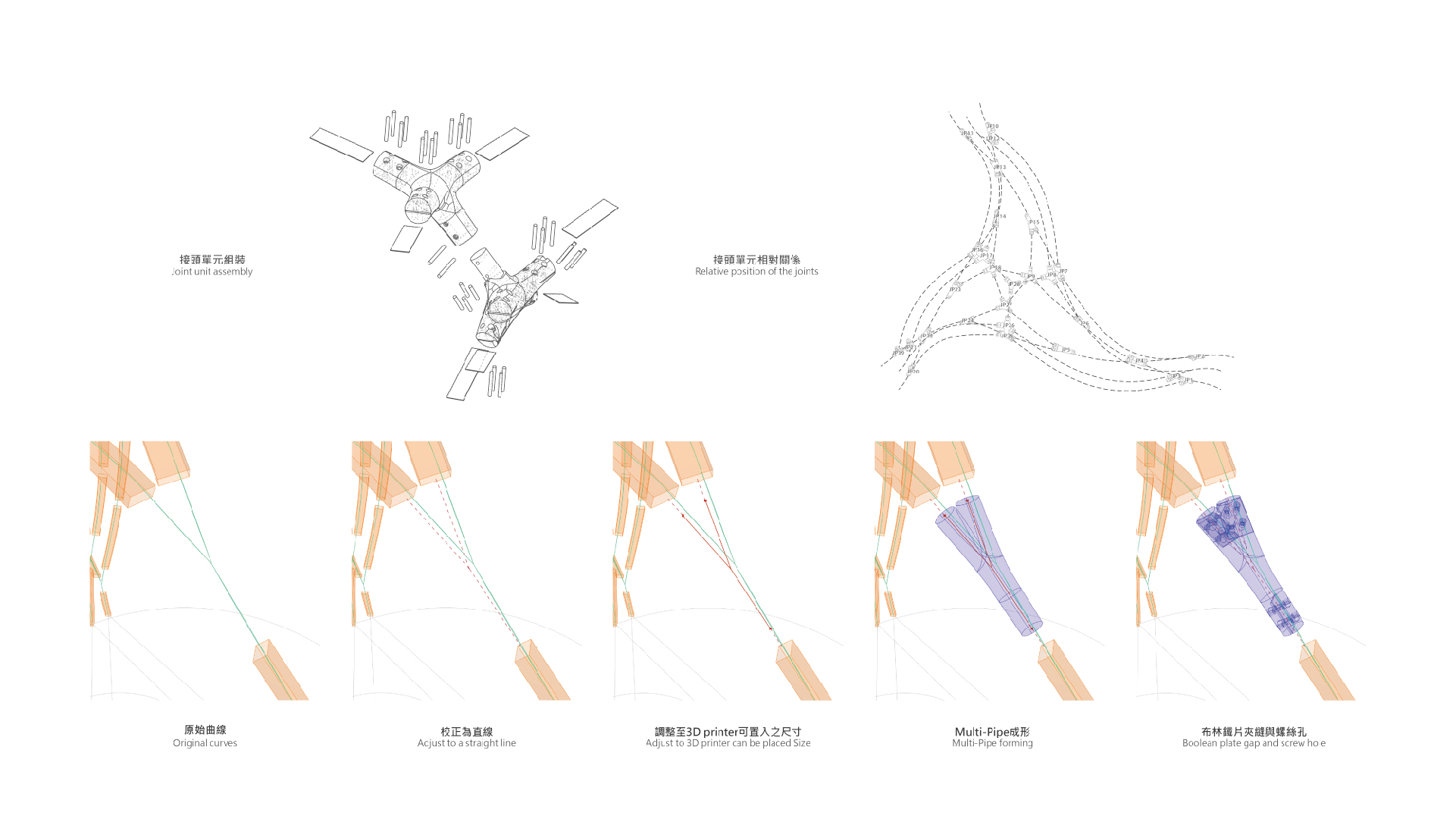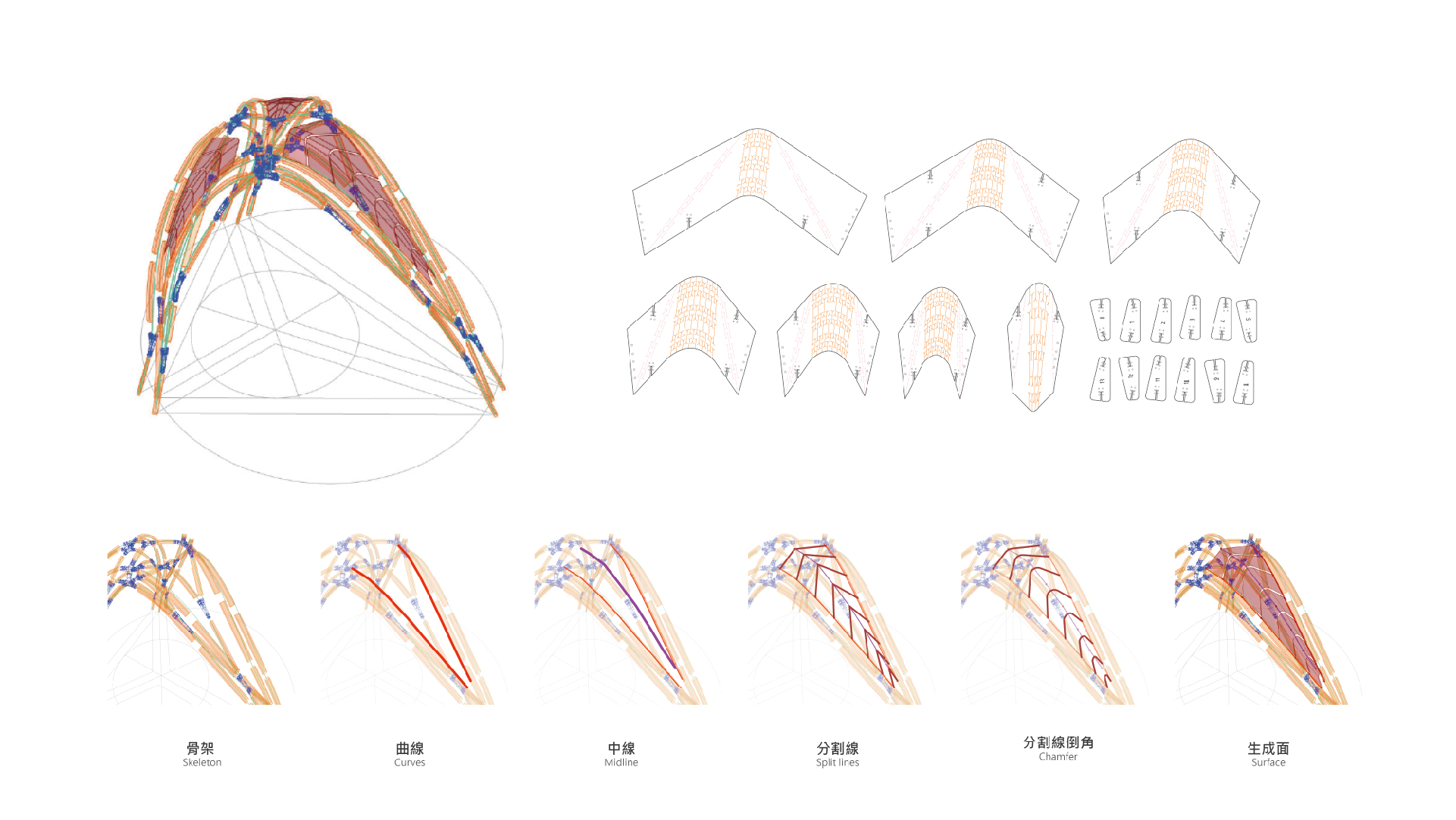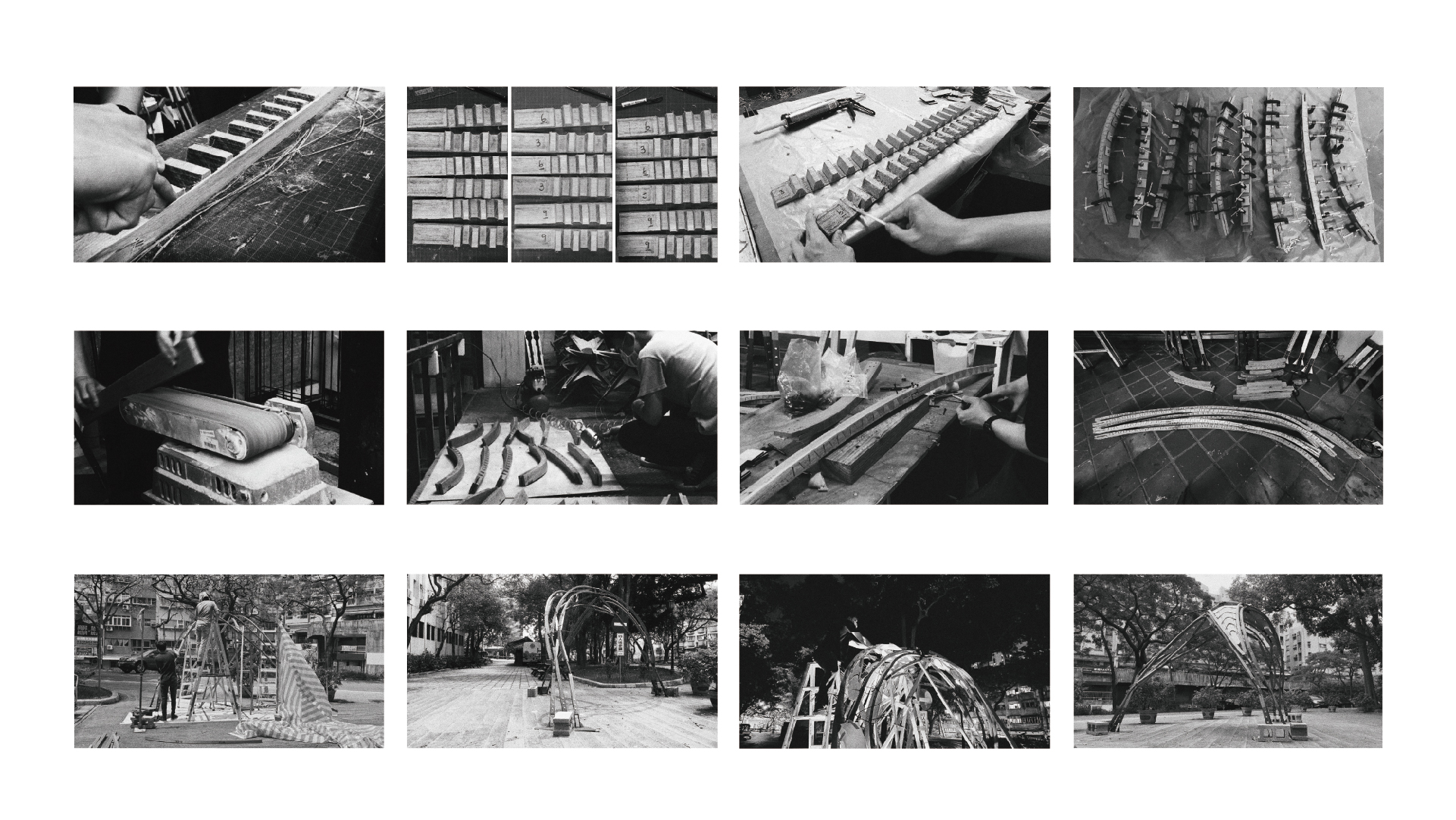曲木之詩–三軸銑削與雷射切割之破壞性數位木構
A Frozen Worship – Three-axis milling and laser cutting of destructive digital wooden design
樹木在生在的過程中,從根、幹、枝、葉,不斷的分岔交織,經過燃燒以後,形成火焰,並隨著氣流流動。此次設計,希望透過木材的彎曲、扭曲,還原樹木的交織,與創造空間的流動性。並以光影變化、結構織理圍塑出神聖性。
首先,在型態找尋上,利用平面上的線條作為結構單元之間的關係,再利用Kangaroo將結構線澎起,並調整參數找到適當的型態。
實驗目標為使用平面破壞性加工方法(加上Z軸的升降),並以拉鍊曲木作為主要研究基礎。來實現木材的可參數化3D扭曲。
拉鍊曲木,是透過參數化計算出兩片彎曲的幾何形體將其攤平,並銑削標準化之木材成拉鍊狀,再將兩片拉鍊狀之木材膠合在一起,形成目標的幾何形狀,且因拉鍊厚薄起伏之鋸齒狀,厚層得以填補薄層,有別於其他破壞性曲木在經過破壞的區域雖易於彎曲但結構較弱之特性。
拉鍊曲木利用CNC車床加工製造出108片合成54支拉鍊曲木,作為Pavilion之骨架。在骨架之間之皮層,則利用雷射切割在夾板上切割出紋路使夾板彎曲。
因應結構單元角度多變,利用3D Printer製造多向度支接頭,接頭以Multi-Pipe成形類似樹枝的型態。
透過參數化與數位製造工具,大幅減少重複且大量之計算過程與人力,且讓木材經過計算達到目標幾何之面與體。
In the process of a tree growth, trees continuously branch and interweave from roots, stems, branches, and leaves. After burning, a flame is formed and flows with the airflow. This design hopes to restore wood. And the fluidity of creating space. And with the changes of light and shadow, structure and weaving around to shape the sacredness.
First, in the search for the Form-Finding, the lines on the plane are used as the relationship between the structural units, and then the Kangaroo is used to swell the structural lines and adjust the parameters to find the appropriate” Form”.
The goal of the experiment is to use a plane destructive processing method (plus Z-axis lifting), and use ZipperedWood as the main research basis. To achieve parameterizable 3D distortion of wood.
ZipperedWood is calculated by parametric calculation of two curved geometric shapes and flattened them, milled standardized wood into a zipper shape, and then glued the two zipper-shaped wood together to form the target geometric shape. The zipper is thick and undulating in a zipper shape, and the thick layer can fill the thin layer. It is different from other destructive ZipperedWood that are easy to bend in the damaged area but have a weak structure.
ZipperedWood is processed by a CNC lathe to produce 108 pieces of synthetic 54 ZipperedWood, which are used as the skeleton of the Pavilion. In the skin layer between the skeletons, laser cutting is used to cut lines on the splint to bend the splint.
In response to the varying angles of the structural units, a 3D Printer is used to manufacture multi-directional branch joints, which are shaped like branches of trees in Multi-Pipe.
Through parameterization and digital manufacturing tools, the repetitive and massive calculation process and manpower are greatly reduced, and the wood can be calculated to reach the target geometric surface and volume.





